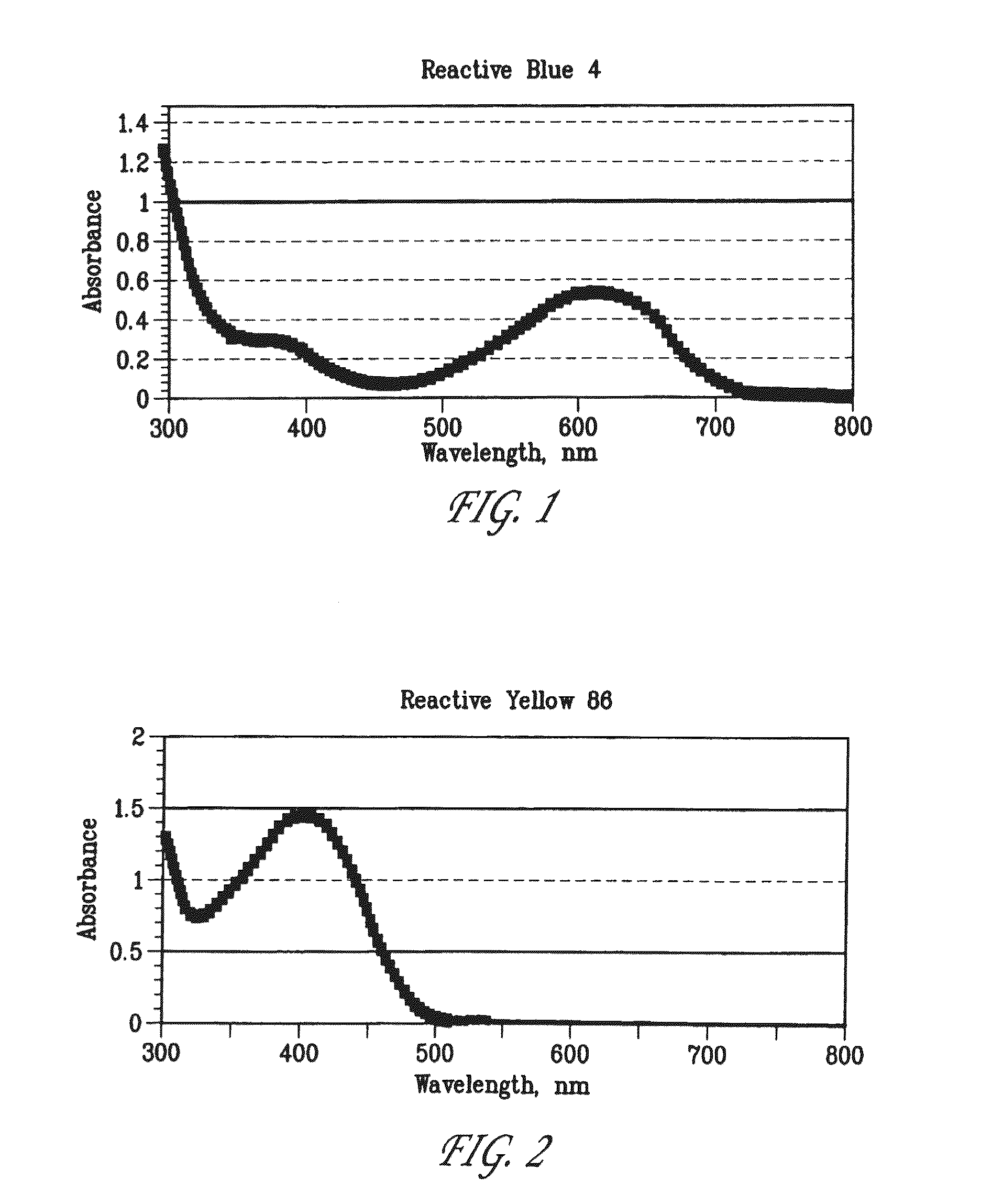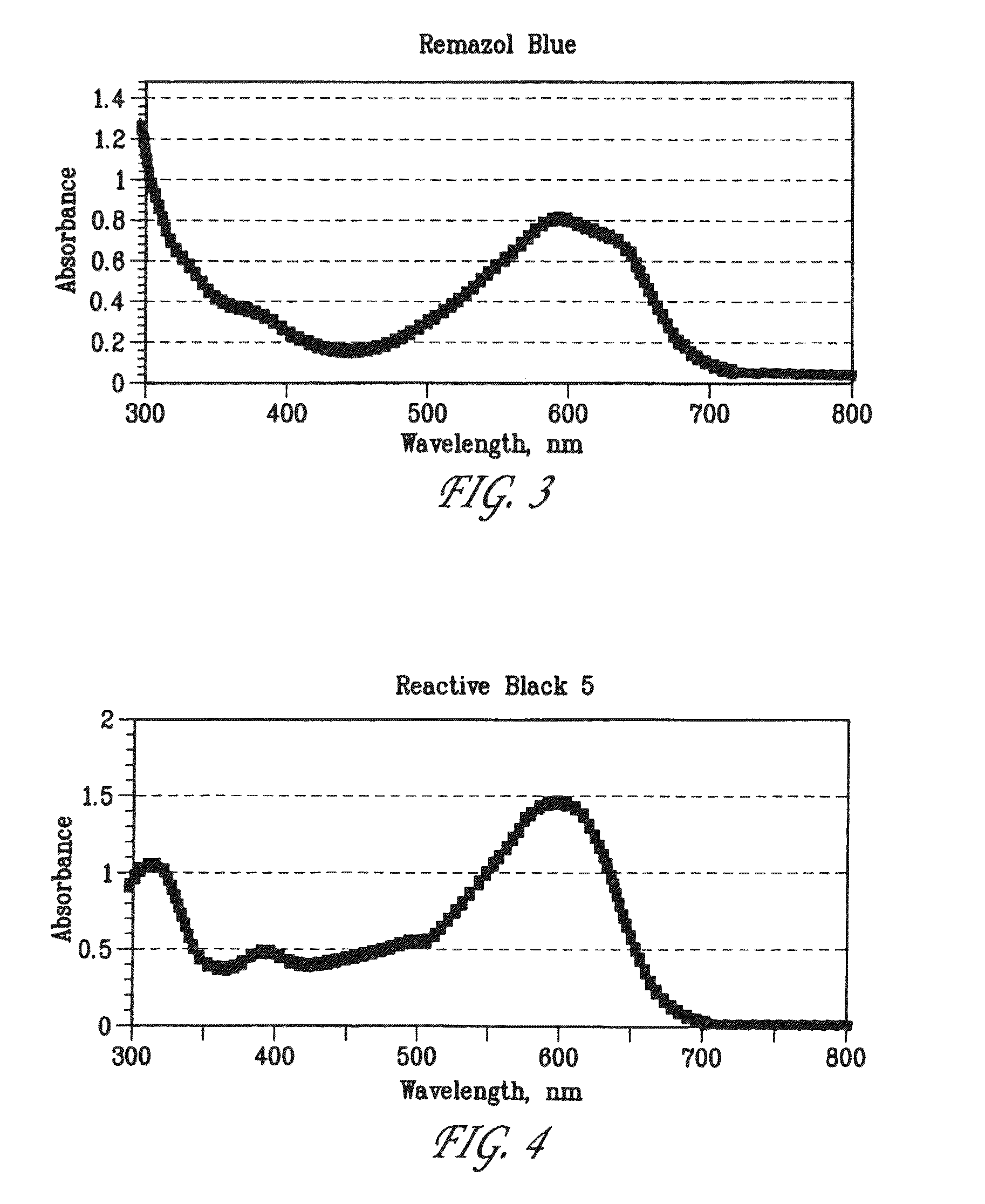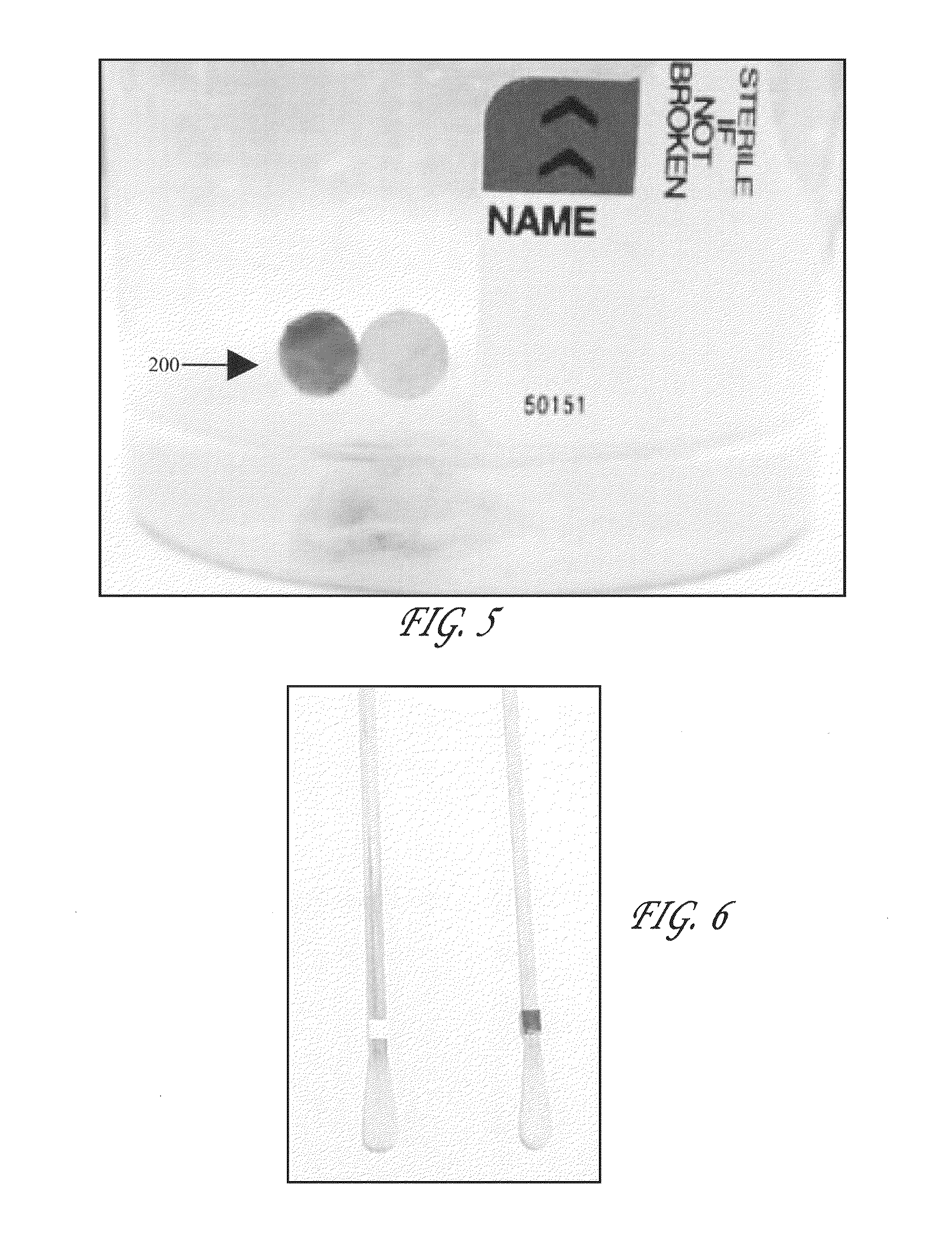Colorimetric substrates, colorimetric sensors, and methods of use
a colorimetric sensor and substrate technology, applied in the field of colorimetric substrates, colorimetric sensors, and methods of use, can solve the problems of unintended effect of breeding resistant strains of bacteria, many symptoms only evident, and severe, even life-threatening infections, and achieve rapid and low-cost detection, reduce the negative side effects of their us
- Summary
- Abstract
- Description
- Claims
- Application Information
AI Technical Summary
Benefits of technology
Problems solved by technology
Method used
Image
Examples
example 1
Some Metal Chelation Embodiments
[0181]In this example, histidine-tagged peptides were purified based on the ability of consecutive histidine residues to bind to a resin (e.g., SEPHAROSE®) containing nickel ions immobilized by covalently attached NTA.
[0182]CPI3, Papa4, and LL3 peptides were labeled on the cysteine site with Reactive Black 5. The SSP3 peptide was labeled on the serine site with Reactive Blue 4. After purification and characterization, the four peptides were bound to NTA resin in phosphate buffered saline (PBS) pH ˜7.4 for ˜2 hours at about room temperature. The resin was then rinsed extensively with PBS. The NTA resin gave a high level of peptide binding (very dark blue) without non-specific binding, as evidenced by very little binding with non-histidine tagged peptides or free reactive dyes.
[0183]The CPI3 and Papa4 peptides on NTA resin were cleaved with Pseudomonas aeruginosa (PA14), the SSP3 peptide was cleaved with Serratia marcescens, and the LL3 peptide was clea...
example 2
Some Charged Membrane Embodiments
[0185]In this example, a negatively charged membrane (membrane ICE-450, available from Pall Corporation, East Hills, N.Y.) was used to bind peptides that contained a positively charged region placed at the end of the peptide (i.e., the 15 arginines of the peptides). The peptides were labeled with negatively charged dyes which when contained on the cleaved portion of the peptide had low affinity for the negatively charged membrane, but a high affinity for a positively charged collector membrane (membrane SB-6407, available from Pall Corporation, East Hills, N.Y.). This concept is shown in FIG. 12.
[0186]The CPI4, Papa5, and T5 peptides were labeled on the cysteine site with Reactive Black 5. After purification and characterization, the three peptides were bound to the negatively charged ICE-450 membrane in phosphate buffered saline (PBS) pH ˜7.4 overnight. The membranes were then rinsed with PBS. Next, positively charge membranes (membrane SB-6407, ava...
example 3
Labeling of Peptides with Reactive Dyes
[0189]Many of the peptide substrates were labeled with reactive dyes. Vinyl sulfone dyes were used to target cysteine groups on the peptides. Mono- and di-chlorotriazine dyes were used to target serine groups on the peptides. Sulfonyl chloride and N-hydroxysulfosuccinimidly (sulfo-NHS) ester dyes were used to target amine groups on the peptides.
[0190]An example of a labeling procedure for the labeling of the peptide CPI4 with Reactive Black 5 is shown in Table 1. CPI4 contains two cysteine groups that are targeted by Reactive Black 5 (a REMAZOL® dye) under basic conditions. The table below demonstrates that different levels of labeling (as evidenced by the dye-to-peptide ratio) can be obtained by varying the labeling conditions. The peptide was at ˜5 mg / ml in water, Reactive Black 5 was at ˜5 mg / ml in water, and the Na2CO3 was at ˜10 mg / ml in water. Labeling was ˜18 hours at ˜37° C.
[0191]
TABLE 1Dye-to-PeptidePeptide (uL)Dye (uL)Na2CO3 (uL)Ratio...
PUM
| Property | Measurement | Unit |
|---|---|---|
| pH | aaaaa | aaaaa |
| volumes | aaaaa | aaaaa |
| volumes | aaaaa | aaaaa |
Abstract
Description
Claims
Application Information
 Login to View More
Login to View More - R&D
- Intellectual Property
- Life Sciences
- Materials
- Tech Scout
- Unparalleled Data Quality
- Higher Quality Content
- 60% Fewer Hallucinations
Browse by: Latest US Patents, China's latest patents, Technical Efficacy Thesaurus, Application Domain, Technology Topic, Popular Technical Reports.
© 2025 PatSnap. All rights reserved.Legal|Privacy policy|Modern Slavery Act Transparency Statement|Sitemap|About US| Contact US: help@patsnap.com



